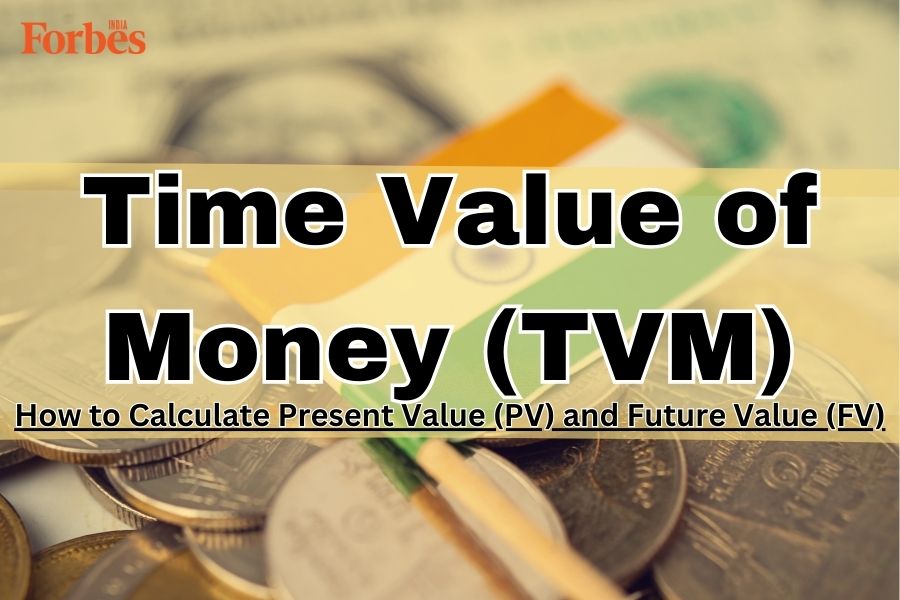
Only a few concepts are as fundamental in the world of finance as the time value of money. Grasping this concept is essential whether you’re a seasoned investor or just beginning to explore financial principles. At its core, the time value of money illustrates how the worth of a sum of money can fluctuate over time due to factors such as interest rates, inflation, and opportunity costs. In this guide, we explore the meaning of the time value of money, discuss the formula used with an example, and explore use cases to empower you to make more informed financial decisions.
What is the time value of money?
The time value of money (TVM) is a fundamental financial principle which asserts that a sum of money available in the present holds greater worth than an identical sum to be received in the future.This assertion is grounded in the ability to invest present funds, allowing them to accrue returns and grow larger over time. Additionally, there’s a risk associated with future money, as there’s no guarantee it will be received due to various factors. The time value of money is occasionally termed as the net present value (NPV) of money.
Components of the time value of money
The importance of the time value of money is defined by its key components, which include:
- FV or the future value of money
- PV or the present value of money
- Interest rates (any returns earned on money)
- Time (measured in years or other units)
- Payment (the amount of money paid or received in each period), divided into:
– positive payments for money received, and
– negative payments for payments made.Also Read: Debt to equity ratio (D/E): What is it, formula and calculation
The formula of the time value of money
The formula for calculating the future value (FV) of money based on the time value of money principle is:FV = PV x [1 + (i/n)]^(nxt)Where:
- FV = future value of money
- PV = present value
- i = interest rate or other return that can be earned on the money
- t = number of years to take into consideration
- n = number of compounding periods of interest per year
This formula represents how an initial sum of money (PV) grows over time (n) at a certain interest rate (r) to become a larger amount in the future (FV).
Example of time value of money
Going by the formula, here’s how we can see an example of the time value of money:
When you invest Rs 20,000 for one year at a 20 percent interest rate compounded annually, at the end of the year, you will have Rs 24,000, which is basically the future value of the Rs 20,000 you have now.This example demonstrates how the time value of money highlights the concept that a rupee received today is worth more than a rupee received in the future due to the potential to earn returns on the money in the interim.
Use cases of the time value of money in finance
The importance of the time value of money in finance cannot be overstated, as it forms the foundation of financial decision-making and analysis. Let’s see some use cases:Investment decisions: Understanding the time value of money is essential for making sound investment decisions. For example, if you want to buy a car worth Rs 5 lakhs in the coming year, you have to calculate the amount of money you need to invest today at a 10 percent interest rate to have that money next year.Cost of capital: The time value of money is critical for determining the cost of capital for businesses. It informs decisions regarding financing options, such as raising funds through debt or equity. By considering the time value of money, businesses can evaluate the true cost of borrowing and assess the returns expected by shareholders.Inflation and purchasing power: Inflation erodes money’s purchasing power over time. Understanding the time value of money helps individuals and businesses account for inflation when making financial plans. By factoring in inflation, they can ensure that their future income or returns will retain their purchasing power.Risk management: Time value of money concepts are also fundamental in risk management. Assessing the time value of money helps individuals and organisations evaluate the risks associated with different financial decisions. It allows them to weigh the potential returns against the risks involved and make informed choices.Opportunity costs: Every financial decision involves opportunity costs—the potential benefits foregone by choosing one option over another. Recognising the time value of money enables individuals and businesses to assess these opportunity costs accurately. They can evaluate the benefits of alternative uses of funds and allocate resources efficiently.
Frequently Asked Questions (FAQs)
What are the factors affecting the time value of money?
The factors to affect the time value of money include interest rates, time period for investments, risk and return, asset liquidity levels, inflation, and more. What are the two techniques of TVM?
The two techniques of the time value of money include compounding and discounting. Compounding calculates the future value of an investment made at once or in a series of equal payments at regular intervals over a certain period of time. On the other hand, discounting calculates the present value of an amount to be received at a future date—at once or as payments at regular intervals. What is the present value of the future Rs 200,000 after 10 years if the discount rate is 8 percent?
Given that the future value is Rs 200,000 after 10 years at an 8 percent annual interest rate, the present value, as per the formula for the time value of money mentioned in the article, is Rs 92,638.7.
